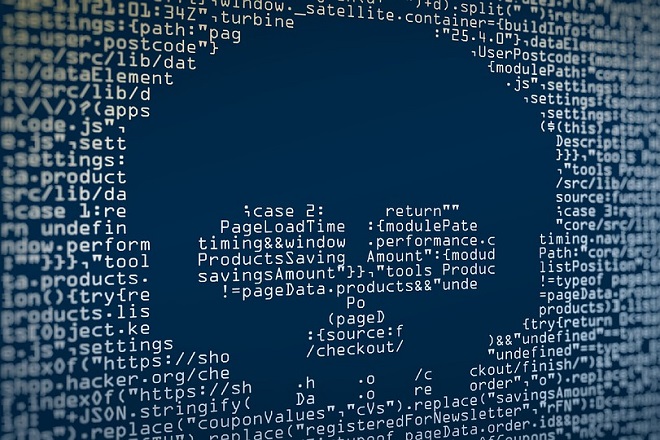A type of attack on computer networks and online services called the distributed denial-of-service attack has long become a problem. To this effect, DDoS attacks inundate networks and servers with irrelevant traffic, thus disabling systems for other honest users and shareholders as well as causing organizations to lose millions in revenue and productivity.
Nevertheless, the integration of the idea of artificial intelligence is strengthening and smartening DDoS attacks. Integrating AI with cybercriminals is an important relevant issue in the field of cybersecurity.
How AI is Improving DDoS Attacks
That is why AI is capable of analyzing the previous attacks data and the internet traffic in order to enhance the next attack. Some of the ways AI is enhancing DDoS attacks include:
- Identifying Vulnerable Targets: AI can in some ways identify potential weaknesses in a network by scanning the infrastructure. It can identify also the servers and routes that can be exposed to disruption.
- Optimizing Attack Traffic: It implies that algorithms can potentially create and modify attack traffic in this sense effectively. Criminals mingle attack methods, approaches, and behaviors to bypass security systems.
- Increasing Efficiency: Using machine learning enhanced ideas and strategies, attacks can be specifically made to take less of the platforms resources and yet deliver the maximum amount of devastation. That is specifically because it being less effective, as are the predictions, fewer bots are required in order to make a significantly larger impact.
- Scaling Up Attacks: It is very easy to create attack templates that AI models can use in controlling massive botnets. It can be easily spread across hundreds of thousands, if not millions, of devices.
- Adaptability: In an attack, these AI systems watch the defense and tweak the attack plan in a way that makes it harder to stop it. When new forms of protection are developed, there are always changes made by the attackers.
Why This Partnership is So Disruptive
DDoS attacks have previously mainly relied on the pressure by computational force from the botnets accountable for flooding a target. With the help of AI horrible operations do not need to be gigantic to be devastating. They say even if the doses are short and focused they can be catastrophic. Here is why this combination is so disruptive:
- Difficult to Trace: AI means that it is relatively simple to manage short bursts of attacks from very many places and objects. This conceals the true origin and puts up a hard time in the fight back.
- Vulnerability Scanning: AI enhances topological exposure and pinpoints sections of networks that could be intervened or certain classes of traffic.
- Highly Precise Targeting: This is because, through machine learning, attacks can be coordinated on weak infrastructure, and on systems that are at their most vulnerable when experiencing workload spikes. Essentially timing and tuning is a way of attaining disruption with relatively less amount of effort.
- Pattern Recognition: Any algorithm assesses normal operations behavior and then interferes at the most inconvenient moment. That is why efforts only need to be directed intentionally but for a very short period of time.
- Human-Like Learning: AI employs the experience of victories and defeats in order to alter attacks in ways which are incredibly hard to foresee. Every succession introduces increases the extent of harm and threat to human lives.
Altogether, this partnership goes a long way towards transferring power and efficiency squarely to the wrong side of the conflict. The use of AI means that DDoS attacks will persist as a form of cyber threat – regardless of their evolution – unless defenses and mitigation also advance in kind.
How AI Caused Real DDoS Damage in Real World
Currently, there is limited material bowing to AI in greater detail for implementation in executing of DDoS attacks. But others pointed out that sophisticated nation-states and hackers have probably already begun using machine learning algorithms for enablement and proof of concept purposes. Some possibilities that reveal scary potential include:
- BlackEnergy Calibre: In December 2016, a nation-state attack was expected when the electricity was cut for hundreds of thousands of homes and companies in Ukraine. Fast learning suggested aspects of machine learning.
- Memcached Weaponization: Different types of DDoS attacks hit in early 2018 increased 50X higher by exploiting open-source service Memcached. Recorded traffic in a peak traffic time was 1.7 trillion bits per second. To some cybersecurity leaders, ‘Big Data’ cannot be run by any kind of human coordination.
- Mirai 2.0: Another development of the infamous Mirai IoT malware in 2019 added the functionality to leverages multiple vectors of attack in different types of devices. The discovery of fresh sources of infection appears rather quick; thus, such cracking has to be algorithmized and automated.
AI and machine learning integration make extremely draining, bandwidth consuming DDoS attacks less necessary. But instead of short bursts, at critical junctures, due to the use of brainy algorithms, it can wreak equivalent havoc. And such attacks will only get even more intelligent. AI and automation will make it possible for hackers to deceive and overload the cybersecurity systems fully.
Protecting from the AI/DDoS Danger
Addressing the frightening scenarios of this partnership will entail flexibility and creativity by the network defenders. It may be difficult to stop the threat altogether – the technology is already pervious. Meanwhile, it is important to identify methods for reducing harm linked to the use of intelligent solutions composed of AI. Some ways to contend with the reality of AI-driven DDoS attacks include:
- Continuous Monitoring: Integrate AI and automation into the monitoring of infrastructure and traffic and prompt security teams about changes associated with the early phases of a cyber assault.
- Adaptive Defenses: Integrate artificial intelligence and big data analytics to detect and remove malicious traffic quickly because patterns and opened doors in vulnerability change over time an attack is ongoing.
- Increased Bandwidth: Intensify means to manage more ability with develop flexible cloud services to handle higher traffic volumes of junk as a standard is unavoidable.
- DDoS Mitigation Specialists: Engage with Managed Detection and Response partners that provide around-the-clock threat hunting capabilities alongside IT solutions that were custom developed solely for resisting highly complex DDoS attacks.
The convergence of DDoS attacks and AI is creating a growing challenge for the enterprise security and risk management executive. But just as the problem leverages advanced technologies, so also the solution. To counter adversarial creativity of hackers and hostile nation regimes, one needs similar creativity from defenders – deploying same strong AI prowess to maintain the infrastructure integrity and security that adversaries unilaterally employ to wreak havoc and mayhem.






